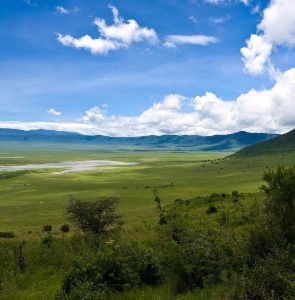Historical Background of Serengeti National Park
The Serengeti National Park, located in Tanzania, is one of the most famous wildlife reserves in the world. It is home to a diverse range of wildlife, including the iconic Big Five – lions, elephants, buffalo, leopards, and rhinoceros. The park covers an area of approximately 14,750 square kilometers and is known for its vast open plains, savannah grasslands, and stunning natural landscapes.
The history of the Serengeti National Park dates back to the early 20th century when the British colonial government designated the area as a game reserve in 1921. The main purpose of establishing the reserve was to protect the wildlife populations in the region and prevent overhunting. The Serengeti continued to gain popularity as a safari destination, attracting visitors from around the world who were eager to witness the incredible wildlife and natural beauty of the park.
Significance of the Establishment Date
The official establishment date of the Serengeti National Park is considered to be October 12, 1951. On this day, the British colonial government formally declared the area as a national park, giving it legal protection and recognition as a conservation area. This milestone marked a significant moment in the history of the park and solidified its status as one of the most important wildlife reserves in Africa.
The establishment of the Serengeti National Park on October 12, 1951, had several key significance:
-
Conservation of Wildlife: The creation of the national park provided a vital sanctuary for the diverse wildlife populations in the region. It ensured the protection and preservation of the animals and their natural habitats, safeguarding them from threats such as poaching and habitat destruction.
-
Promotion of Tourism: The Serengeti National Park quickly became a popular tourist destination following its establishment. The park’s stunning landscapes and abundant wildlife attracted visitors from around the world, boosting the local economy and supporting the tourism industry in Tanzania.
-
Scientific Research: The national park has also played a crucial role in scientific research and conservation efforts. Researchers and conservationists have been able to study and monitor the wildlife populations in the park, gaining valuable insights into their behavior, ecology, and conservation needs.
-
Cultural Heritage: The Serengeti National Park is not only a natural treasure but also a cultural heritage site. It is home to the Maasai people, who have coexisted with the wildlife in the region for centuries. The park’s establishment date serves as a reminder of the importance of preserving the natural and cultural heritage of the Serengeti.
In conclusion, the establishment of the Serengeti National Park on October 12, 1951, was a landmark event that had a lasting impact on wildlife conservation, tourism, and scientific research in Africa. The park continues to be a symbol of natural beauty and biodiversity, attracting visitors from all corners of the globe. For those interested in experiencing the wonders of the Serengeti, Sunset Africa Safari offers unforgettable tours and safari experiences. To book your next adventure, please contact info@sunsetafricasafari.com.



